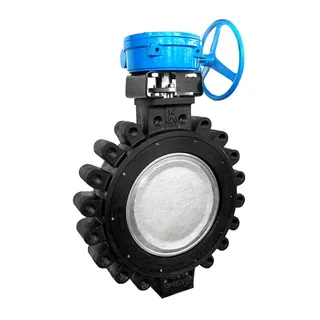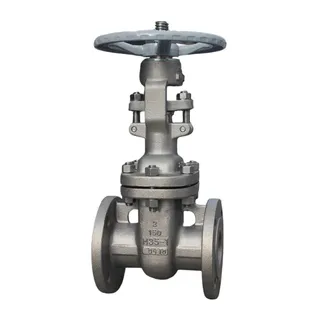In industrial production, valve gaskets may be small, but their function is significant. They prevent leakage between equipment caused by pressure, corrosion, or thermal expansion and contraction. The machined surface always has small imperfections, and gaskets can fill these tiny gaps to ensure sealing of the equipment. Choosing the right gasket ensures that the valve does not leak, so it is important to select carefully.
Selecting a gasket is not just about choosing any material; it requires a comprehensive consideration of many factors. Each factor affects whether the gasket can seal effectively and last long.
A gasket must have elasticity, meaning it can stretch and contract so that during equipment operation, when pressure and temperature change, it can adjust accordingly. Otherwise, its sealing performance will deteriorate. For example, under high temperature, gasket materials tend to soften and deform, and their strength also weakens, reducing sealing pressure. Therefore, choosing a gasket with elasticity and recovery capability ensures stable sealing.
A gasket must also be soft so it can closely fit the contact surface for better sealing performance. Especially when the equipment surface is uneven, a soft gasket can fill all gaps. For instance, a rubber gasket, being soft, can achieve sealing under low preload, making it suitable for low-pressure and vacuum environments.
The gasket must not react with the medium; otherwise, it can cause contamination or corrosion. Different media require different gasket materials. For example, natural rubber can be used in water, seawater, and air but is not suitable for mineral oils. Therefore, the gasket must be selected according to the specific medium to ensure cleanliness and durability.
A gasket must have toughness; otherwise, it can easily fail under pressure and tightening force. In high-pressure environments, the gasket must withstand pressure; otherwise, it will be extruded, and sealing will fail. For example, a rubber gasket, although soft, can easily be squeezed out under internal pressure. Therefore, the gasket should be selected according to actual pressure with sufficient toughness and pressure resistance.
A gasket's performance varies with temperature. Some gaskets harden and shrink at low temperatures, while others soften and deform at high temperatures, affecting sealing. For instance, an asbestos rubber sheet tends to stick to the flange under high temperatures, making replacement difficult. Therefore, the gasket should be chosen according to the operating temperature range of the equipment.
It is important that the gasket is easy to process and install. If the gasket is complex to manufacture or difficult to install, the cost will increase, and improper installation may cause leakage. For example, metal gaskets require high precision in processing and installation; otherwise, leakage can occur. Choosing gaskets that are easy to process and install can save effort and cost.
A gasket should not adhere to the sealing surface and must be easy to remove. During equipment maintenance, gaskets often need replacement, and if the gasket sticks to the surface, removal becomes difficult and may damage the equipment. For example, asbestos rubber sheets tend to stick to flanges under high temperatures, making replacement troublesome. Therefore, choosing non-sticky, easy-to-remove gaskets facilitates equipment maintenance.
When selecting gaskets, it is essential to understand the characteristics and applications of different materials.
Rubber gaskets are widely used because of their softness and good adaptability. Different types of rubber are suitable for different media and temperature ranges:
• Natural Rubber: Can be used in water, seawater, and air. The long-term service temperature should not exceed 90°C, and it performs well at low temperatures, usable above -60°C.
• Nitrile Rubber: Suitable for petroleum products such as petroleum and lubricating oil. The long-term service temperature is 120°C, resistant up to 150°C in hot oil, and can be used between -10°C and -20°C at low temperatures.
• Neoprene Rubber: Can be used in seawater, weak acids, and weak alkalis. It has good aging resistance, long-term temperature below 90°C, maximum 130°C, and low-temperature range between -30°C and -50°C.
• Fluororubber: Resistant to acids, oxidation, oils, and solvents, suitable for various acidic media and some oils and solvents, with a long-term temperature below 200°C.
Rubber gaskets are suitable for low-pressure (especially below 0.6 MPa) and vacuum environments but not for organic solvent conditions, where swelling may lead to sealing failure.
Asbestos rubber gaskets are low-cost and easy to use but are prone to slight leakage and adhesion at high temperatures. Their application range is limited:
• XB450 Asbestos Rubber Sheet: Recommended safe range is 250–300°C, pressure 3–3.5 MPa.
• 400 Oil-Resistant Asbestos Rubber Sheet: Maximum service temperature 350°C.
Asbestos rubber sheets contain chloride ions and sulfides that can form galvanic corrosion with metal flanges after absorbing water, making them less suitable for non-oil media.
PTFE gaskets are suitable for low-pressure, medium-temperature, strong corrosion, and contamination-free media such as strong acids, alkalis, halogens, and pharmaceuticals. The safe operating temperature is 150°C and pressure below 1 MPa. Filled PTFE has higher strength but a reduced corrosion resistance and should not exceed 200°C. PTFE-encapsulated gaskets generally withstand up to 2 MPa.
Graphite gaskets are high-performance sealing materials with the following characteristics:
High-Temperature Resistance: Can be used long-term at temperatures above 500°C, with even higher short-term limits, suitable for boilers, high-temperature reactors, and other high-temperature equipment.
Corrosion Resistance: Excellent resistance to strong acids, strong alkalis, and organic solvents, meeting the sealing requirements of chemical, pharmaceutical, and related industries.
Self-Lubricating: Does not easily adhere during installation or removal, reducing damage to equipment surfaces and facilitating maintenance.
Good Compressibility and Resilience: Compresses evenly to fill small flange surface irregularities, providing stable sealing performance.
Graphite gaskets are suitable for a wide range of media and operating conditions, including high temperature, high pressure, and corrosive environments, and are widely used in chemical, pharmaceutical, power generation, and steel industries.
Metal wound gaskets combine the heat resistance, resilience, and strength of metals with the softness of nonmetallic materials, offering excellent sealing performance. Among them, stainless steel wound with flexible graphite performs best. Their application range is wide:
• Gas Media: Pressure up to 14.7 MPa (up to 19.6 MPa domestically).
• Liquid Media: Pressure up to 30 MPa.
• Temperature Range: -190°C to +600°C (up to 1000°C under non-oxidizing, low-pressure conditions).
Metal wound gaskets are suitable for equipment with large pressure and temperature fluctuations, such as heat exchangers, reactors, pipelines, valve and pump inlet and outlet flanges, etc.
Metal flat and corrugated gaskets are suitable for medium- and high-pressure valves, pipelines, and small-diameter equipment flanges. The service pressure varies with temperature:
• Metal Flat Gaskets: 1.568–31.36 MPa.
• Metal Corrugated Gaskets: 1.568–3.92 MPa.
The material should be selected according to the medium and temperature, suitable for high-risk applications such as high temperature, high pressure, steam, toxic, flammable, and explosive media. High-performance ring joint gaskets, serrated composite gaskets, spiral wound gaskets, and corrugated-tooth composite gaskets are recommended.
Selecting the right gasket requires combining actual operating conditions with practical experience.
Before selecting a gasket, it is necessary to understand the specific operating conditions of the equipment, including medium properties, pressure, temperature, equipment size, operating conditions, and continuous operation duration. Only with this information can the most suitable gasket be selected for optimal performance.
Gasket selection should consider multiple factors such as elasticity, softness, medium compatibility, toughness, temperature adaptability, processability, installation, and replacement. For example, rubber gaskets are soft but unsuitable for high-temperature, high-pressure environments; metal gaskets withstand high temperature and pressure but require precise installation. Therefore, the gasket with the most suitable overall performance should be chosen according to specific conditions.
In high-risk conditions such as high temperature, high pressure, steam, toxic, flammable, and explosive environments, high-performance gaskets must be used to ensure safe operation. With stricter environmental standards, asbestos-containing materials should be avoided as they are harmful to health and the environment. In industries requiring high media purity, such as pharmaceuticals and food, gaskets that do not contaminate the medium should be selected.
Nowadays, many new gasket materials perform better than traditional ones. For instance, high-strength graphite gaskets and PTFE-encapsulated gaskets, though more expensive, have longer service life and improved sealing performance. Depending on actual conditions, it is advisable to use these new materials for better efficiency.
After selecting the right gasket, regular inspection is still necessary. During operation, gaskets may age or be damaged, reducing sealing performance. Regular checks and timely replacement of damaged gaskets ensure continued sealing reliability.
Although valve gaskets are small, they play a vital role in industrial production. Selecting the right sealing gasket ensures valve tightness and leak prevention. Gasket selection must consider multiple factors such as elasticity and resilience, softness and conformity, medium compatibility, toughness and pressure resistance, temperature adaptability, processing and installation, and ease of replacement. According to specific working conditions, choose the gasket material with the best overall performance. In high-risk or high-purity applications, select high-performance, safe, and environmentally friendly gasket materials. Hopefully, this content helps you, and if you have any questions, feel free to ask at any time.



